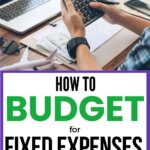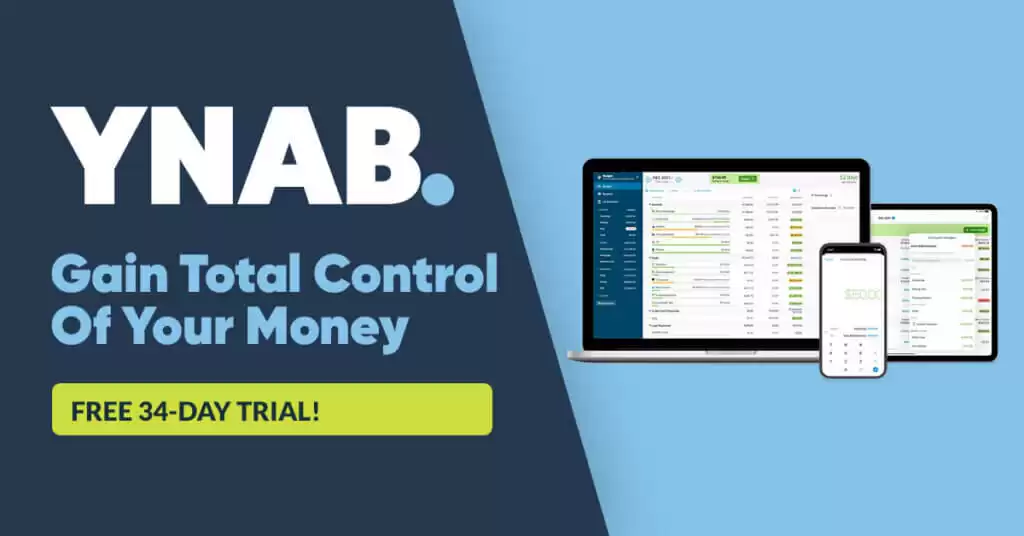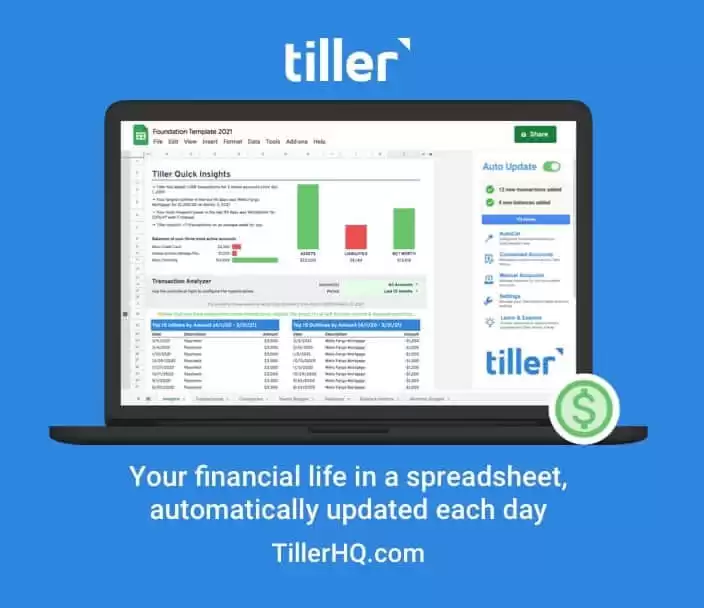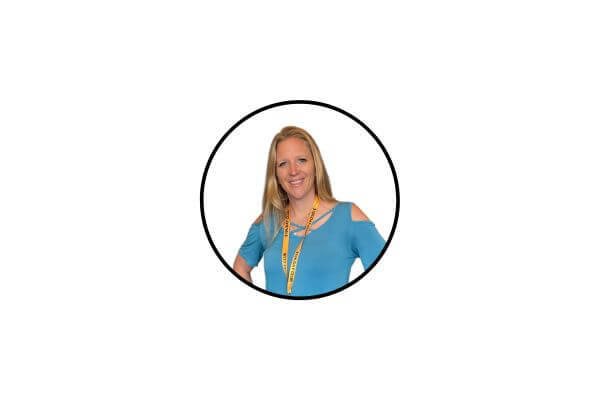What Are Fixed Expenses? How to Budget for Fixed Costs
Inside: Fixed expenses are a vital part of any budget, and understanding how to account for them is essential to staying on track. This guide will teach you about fixed expenses and how to use them in your monthly budget to keep expenses under control.
Budgeting is the cornerstone of financial stability.
Whether you want to or not, it will take away the stress of money.
A budget is a practical tool that enables you to plan your spending and savings, ensuring a fair share of your income goes towards critical expenses. It also gives you more control over your money, reducing stress and enabling you to meet your financial objectives.
This is something you want, right?
In this post, we will uncover information specifically related to fixed budget expenses.

This post may contain affiliate links, which helps us to continue providing relevant content and we receive a small commission at no cost to you. As an Amazon Associate, I earn from qualifying purchases. Please read the full disclosure here.
Decoding Your Expenses – Fixed and Variable
Understanding expenses forms the bedrock of effective budgeting practices. There are two key types of expenses to consider: fixed and variable.
- Fixed expenses are those that remain constant every month, such as rent or car payments.
- Variable expenses, on the other hand, fluctuate monthly based on usage or consumption, like groceries, utilities, or gas.
Balancing these two types of expenses forms a significant part of personal budgeting.
What is A Fixed Expense?
A fixed expense is a cost that remains typically constant and is paid at regular intervals. These intervals may be weekly, monthly, quarterly, or annually.
Given their consistency, they contribute to financial predictability and ease of budgeting.
What is an Example of a Fixed Expense?

Here are common fixed expense examples that cover a wide spectrum but predominantly include costs required to maintain a basic standard of living. Here are some examples:
- Rent or mortgage payments: This encompasses the regular cost of housing.
- Insurance premiums: This could be for your car, health, life, renters, or homeowners insurance.
- Loan payments: Regular installments for obligations like student loans and car loans belong to this category.
- Utilities: Though they may fluctuate occasionally, regular payments like water, gas, and electricity are often treated as fixed costs.
- Subscriptions: Recurring payments for services such as gym memberships or streaming platforms.
- Savings: For disciplined budgeters, fixed contributions to saving accounts can be considered a monthly fixed expense. This is how Money Bliss readers save so much money!
The list can extend to include other less common fixed expenses, such as alimony, child support, or back tax payments, depending on personal circumstances.
Enjoy guilt-free spending and effortless saving with a friendly, flexible method for managing your finances.
- Comprehensive approach to budgeting, helping you plan monthly budgets based on your income.
- Offers expert advice, making it suitable for those who require an in-depth, forward-thinking budgeting strategy.
- Superior synchronization skills make it the winner in this area.
- YNAB has extra features like goal setting for budgeting, shared budgeting tools for partners.
- Option to manually add and upload transactions from accounts each month.
- YNAB prioritizes user privacy.
What is a periodic fixed expense?
A periodic fixed expense is a cost that is regular and predictable but does not occur monthly. These expenses still retain the characteristics of fixed expenses.
They may be caused by quarterly, semi-annual, or annual payment terms and require careful budgeting and planning. Examples include annual subscriptions, car insurance paid semi-annually, or yearly property taxes.
It’s essential to account for these expenses in your budget, dividing the total cost by the number of months until payment to ensure you’re adequately prepared when they’re due.
How to Budget for Fixed Expenses

Budgeting is a crucial financial activity as it helps manage income effectively and ensures all necessities are covered.
Most people use the zero based budget or the biweekly budget as a starting point.
1. Start With Fixed Expenses in Budgeting
Starting with fixed expenses in the budgeting process is essential, as they make up the majority of one’s budget and are typically consistent for longer periods.
When writing out your budget, prioritize fixed expenses such as housing costs, insurance, and childcare. You can use our personal budget categories to find out which expenses you shouldn’t forget.
Upon allocating your income for the month, ensure these bills take precedence over discretionary spending to avoid budgeting errors.
Personal finance and money management software allows you to manage spending, create monthly budgets, track investments, retirement and more.
I have used this platform for over 20 years now.
- Birds-eye view of your complete financial picture.
- Conveniently download your spending activities, and automatically categorize them (Quicken connects to over 14,000 financial institutions).
- Track investments with it's features like portfolio analytics, retirement goals, and market comparison.
- Little complex to use at first, the learning curve is moderate.
- Yearly subscription-based model to use the platform.
2. Prioritizing Between Fixed and Variable Expenses
Prioritizing between fixed and variable expenses can often feel like walking a tightrope.
- The first step is budgeting for your fixed expenses. Since they make up the majority of your budget and are for longer periods of time, it’s crucial to ensure these costs are taken care of first.
- Next, plan for your variable expenses. These costs fluctuate every month and can be adjusted easily.
- Finally, you will account for flexible expenses.
As always, don’t forget to save and invest, as this will help with financial sustainability and wealth development.
3. Tools and Techniques for Efficient Budgeting
Today’s digital landscape offers myriad tools and techniques for efficient budgeting, which is great news for you!
Apps and digital tools can facilitate the tracking of expenses in real-time, thus making it easier to discern patterns and identify savings opportunities. Using a line-item budget can help you dig into where your money is going and plan every dollar you earn.
Here are our favorite budget apps.
Regularly reviewing and updating your budget can help you stay on top of changes and future uncertainties.
Your financial life in a spreadsheet, automatically updated each day.
Tiller is the fastest, easiest way to manage your money with the unlimited flexibility of a spreadsheet.
Update your finances in one place, so you can take control of spending, optimize cash flow, and confidently plan your financial future.
- Tiller automatically updates Google Sheets and Microsoft Excel with your latest spending, balances, and transactions each day.
- No more tedious data entry, CSV files, or logging into multiple accounts.
- You can customize everything and finally track your money, your way.
How do I determine whether a cost is fixed or variable?

Determining whether a cost is fixed or variable often comes down to its consistency and its correlation with a factor such as output, usage, or time.
- Fixed costs remain constant over time or within certain activity levels; examples include rent and insurance premiums. They do not fluctuate with changes in production or the number of goods sold.
- Variable costs, on the other hand, fluctuate in direct proportion to levels of spending, such as groceries or gas.
Understanding this difference can help with accurate cash flow forecasting and effective financial management.
Strategies to Save on Fixed Costs
Now, the key is to try to lower your fixed expenses as much as possible. This will make the biggest difference in your budget.
For example, if your rent for a one bedroom apartment is $1850, maybe you move in with a roommate, and your rent is lowered to $800 per month. That is a savings of $1050, which you can save for a down payment on a house.
Ways to Curb Fixed Expenses
Optimizing your budget often entails finding ways to reduce your fixed expenses. Several strategies can help achieve this:
- Renegotiate Your Bills: Reach out to service providers to negotiate lower rates for services such as insurance premiums, Internet, phone service, and more.
- Refinance Your Loans: If interest rates have decreased, consider refinancing your mortgage or student loans to lower the monthly payments.
- Downsize Your Living Situation: One major way to cut costs is to find a smaller or cheaper place to live.
- Cancel Unused Subscriptions: Regular payments for services you don’t use, like gym memberships or streaming platforms, can silently drain finances.
- Automate Savings: Regular, automated transfers to a savings account can enforce discipline and consistency in managing money.
Remember, while these strategies can help you cut costs, each individual’s circumstances are different, so personalized considerations should be made.
Which fixed expense would be most difficult to change if money is needed for car payments?

Car payments are a real struggle for most people. Right now, the average car loan is between $516-725 per month depending on a used or new vehicle. 1
As such, your largest fixed expenses are usually the most challenging to change.
- If you require more money for car payments, the most difficult expenses to alter would likely be your mortgage or rent payments. Reducing these costs often necessitates significant lifestyle changes, such as moving to a cheaper home or obtaining a roommate.
- Other difficult-to-change fixed expenses could include insurance or student loan payments, depending on the terms of your loans or policies.
It’s important to have an emergency fund set up for unforeseen repairs like these to avoid having to drastically change your lifestyle.
Practical Tips for Achieving Financial Stability
Achieving financial stability often boils down to effective management and strategic planning. Here are some practical tips:
- Pay Your Bills on Time: This reduces unnecessary fees and interest costs. If this is a challenge, setting up automated payments may help.
- Save Regularly: Aim to set aside a certain percentage of income on a regular basis. Automated savings plans are a useful tool for this.
- Prioritize Spending: Distinguish between your wants and needs to help prioritize your spending.
- Get Insured: Protect yourself from large, unexpected expenses by ensuring appropriate coverage on insurance.
- Stay Informed: Regular budget reviews and financial check-ups can help you stay on track and adjust your plans as necessary.
Remember, financial stability is a journey, not a one-time achievement. It requires consistency and patience. So, celebrate your small financial victories along the way!
Enjoy guilt-free spending and effortless saving with a friendly, flexible method for managing your finances.
- Comprehensive approach to budgeting, helping you plan monthly budgets based on your income.
- Offers expert advice, making it suitable for those who require an in-depth, forward-thinking budgeting strategy.
- Superior synchronization skills make it the winner in this area.
- YNAB has extra features like goal setting for budgeting, shared budgeting tools for partners.
- Option to manually add and upload transactions from accounts each month.
- YNAB prioritizes user privacy.
Frequently Asked Questions
Does This List of Fixed Expense Examples Help You?

In conclusion, examining and reducing your fixed expenses can be a transformative step toward achieving financial stability.
Contrary to popular belief, fixed costs are not immutable. With diligence and thoughtful consideration, you can explore cheaper alternatives for health insurance premiums, cell phone plans, and other consistent expenses.
Lowering your fixed costs enables automatic, consistent savings which can then be directed towards settling debt or securing your future. The beauty of this approach lies in its subtlety as this won’t feel like an imposition on your lifestyle.
Therefore, understanding and managing your fixed expenses can indeed play a crucial role in your journey to financial soundness.
It’s not just about making frugal decisions, rather it’s about making smart ones that can reap substantial benefits in the long run.
Now, do you have the traits needed to be financially stable?
Source
- LendingTree. “Average Car Payment and Auto Loan Statistics 2023.” https://www.lendingtree.com/auto/debt-statistics/. Accessed November 27, 2023.
Did the post resonate with you?
More importantly, did I answer the questions you have about this topic? Let me know in the comments if I can help in some other way!
Your comments are not just welcomed; they’re an integral part of our community. Let’s continue the conversation and explore how these ideas align with your journey towards Money Bliss.





